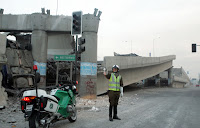 |
| Design studios at KTH (Royal Institute of Technology), Stockholm. |
ABSTRACT:
"Design studio is characterised by a teaching model that is distinctly suited for problem-solving. Correspondingly, literature, including information produced by Australian faculties of architecture about their courses asserts that design studio is modelled around problem-solving. However, my research into design studio handouts found a common omission in posing a ‘problem’—a problem that would justify a design solution and from which the ´significance´ of the task would derive. I argue that a well-articulated design problem imbues the case with purpose and significance. It also provides a benchmark against which the results can be assessed and verified."
Maturana, B. (2014). Where Is the ‘Problem’ in Design Studio: Purpose and Significance of the Design Task.International Journal Of Architectural Research: ArchNet-IJAR, 8(3), 32-44.





























